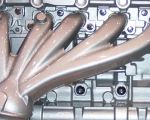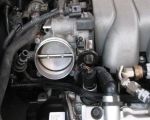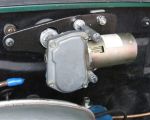How to Fix a Broken Power Steering Hose: A Comprehensive Guide
- Understanding the Power Steering System
- Signs of a Broken Power Steering Hose
- Steps to Fix a Broken Power Steering Hose
- Tools and Materials Needed for the Repair
- Common Complications and Solutions
- When to Call a Professional for Help
- Emergency Towing Services for Power Steering Issues
A broken power steering hose can cause significant problems with your vehicle's handling, making it difficult to steer. If you find yourself in a situation where your power steering hose has failed, it's essential to know what to do next. In this guide, we’ll walk you through how to fix a broken power steering hose, signs to look out for, tools you’ll need, and how to prevent future issues. We'll also discuss when it’s necessary to call a professional or seek emergency towing services.

IMC powered by Parts Authority
139 Lafayette Dr, Syosset, NY 11791, USA
Understanding the Power Steering System
The power steering system in your vehicle makes it easier to steer, especially at low speeds. It uses hydraulic pressure to assist with turning the steering wheel. The power steering hose is a critical component that carries fluid from the pump to the steering gear. When this hose breaks, it can lead to a loss of fluid and, ultimately, a failure of the power steering system, making it much harder to turn the wheel.

Power Brake Exchange
2870 Aiello Dr, San Jose, CA 95111, USA
1. The Role of the Power Steering Hose
The power steering hose is responsible for carrying pressurized fluid between the power steering pump and the steering mechanism. If the hose becomes damaged or cracked, fluid leaks can occur, causing a loss of hydraulic pressure. This leads to steering difficulties and potential damage to other parts of the system if not addressed promptly.
Signs of a Broken Power Steering Hose
There are several signs that indicate your power steering hose might be broken or damaged. These symptoms should not be ignored, as they can escalate into more serious problems if left unresolved:
1. Difficulty Steering
If you find it unusually difficult to turn the steering wheel, particularly at low speeds, this could be a sign that your power steering hose has broken. The loss of hydraulic pressure makes it harder to steer the vehicle, especially when parking or making sharp turns.
2. Power Steering Fluid Leaks
One of the most obvious signs of a broken power steering hose is fluid leakage. You may notice fluid pooling under your vehicle, often near the front tires or under the engine. This fluid is typically a reddish or brown color. If you see a leak, it’s important to address the issue quickly to avoid damaging the power steering pump.
3. Unusual Noises
A broken power steering hose can cause the power steering pump to work harder, which may result in whining or squealing noises when you turn the wheel. These sounds are often indicative of low fluid levels caused by leaks, and they should not be ignored.
Steps to Fix a Broken Power Steering Hose
If you feel confident in your mechanical abilities, fixing a broken power steering hose can be done at home with the right tools. Below are the general steps for replacing the hose:
1. Lift the Vehicle and Locate the Hose
Start by lifting the vehicle using a jack and placing it securely on jack stands. This will give you access to the power steering pump and hoses. Once the vehicle is lifted, locate the power steering hose, which connects the pump to the steering rack or gear.
2. Drain the Power Steering Fluid
Before removing the hose, you’ll need to drain the power steering fluid. Place a container beneath the hose to catch the fluid as it drains. You may also want to wear gloves to protect your hands from the fluid, which can be slippery and potentially harmful to skin.
3. Remove the Broken Hose
Using the appropriate tools (such as a wrench or pliers), loosen the fittings on both ends of the power steering hose. Carefully remove the hose, making sure not to damage other components in the process.
4. Install the New Hose
Once the broken hose is removed, install the new hose by connecting it to the power steering pump and steering gear. Tighten the fittings securely, ensuring there are no leaks. Be sure the hose is routed properly to avoid any interference with other components.
5. Refill the Power Steering Fluid
After installing the new hose, refill the power steering fluid reservoir with the appropriate fluid for your vehicle. Start the engine and turn the steering wheel from side to side to allow the fluid to circulate and remove any air bubbles. Check for leaks around the hose connection and tighten any loose fittings as necessary.
Tools and Materials Needed for the Repair
To fix a broken power steering hose, you'll need a few basic tools and materials. Here’s a list of what you will typically need:
1. Jack and Jack Stands
To safely lift the vehicle and access the power steering hose, you’ll need a jack and jack stands. Ensure the vehicle is secure before starting the repair.
2. Wrenches and Pliers
You’ll need wrenches or pliers to loosen the fittings and remove the broken hose. Make sure you have the right size to avoid damaging the fittings.
3. Replacement Power Steering Hose
Purchase a replacement hose that matches your vehicle’s specifications. You can find hoses at auto parts stores or through your vehicle manufacturer.
4. Power Steering Fluid
Make sure to have the correct type of power steering fluid to refill the system after the repair.
Common Complications and Solutions
While fixing a broken power steering hose is straightforward, there are some potential complications that may arise:
1. Difficulty Removing the Old Hose
If the hose is corroded or the fittings are stuck, it may be difficult to remove. Applying penetrating oil to the fittings can help loosen them. If you're still having trouble, using a hose cutter to remove the damaged section of the hose may be necessary.
2. Leaks After Installation
If the new hose leaks after installation, check the fittings for tightness. Sometimes a small leak can be caused by an improperly tightened connection, or the O-rings may not have seated properly. Tightening the connections or replacing the O-rings should fix the issue.
When to Call a Professional for Help
If you're not comfortable with performing the repair yourself or if complications arise, it’s always best to call a professional mechanic. They have the tools and expertise to quickly and safely replace a broken power steering hose. If you’re unable to fix the issue and need immediate assistance, contacting a towing or roadside service may be your best option.
Emergency Towing Services for Power Steering Issues
If your vehicle is immobilized due to a broken power steering hose or if you experience steering difficulties while driving, roadside assistance or towing services can help. These services can transport your vehicle to a nearby garage or repair shop for further inspection. In emergency situations, it's important to call for assistance immediately to prevent further damage to your vehicle.
If you're looking for reliable towing services or roadside assistance, consider Rescue & Towing. Their professional team is ready to assist with any vehicle-related issues, from power steering repairs to full towing services. Visit their website for more information!


























